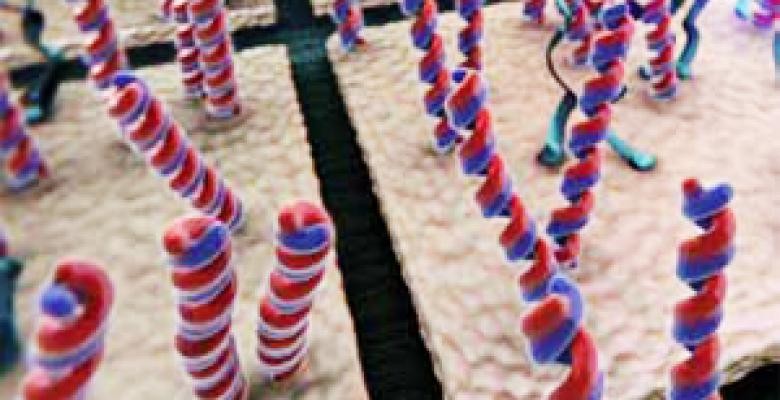Electrical Engineer Develops New Nanoscale Tools to Aid Discoveries in the Life Sciences

Ken Shepard, a professor of electrical engineering, believes there is nowhere else in the world where he could do what he does. “Imagine a convergence of semiconductor technology and biotechnology. There is no company out there that has expertise in both,” he says. “It takes a university to figure out how to put those two pieces together and create new technologies from this synergy.”
In particular, his research focuses on finding new applications for integrated circuits, or chips. Semiconductor research has, he says, “focused on using integrated circuits for building computers and communication devices like cell phones, but what we haven’t really explored is how we can use them for biotechnology.”
Shepard, who before joining Columbia in 1997 worked for IBM designing microprocessors, uses electronics to interface to biological systems, from single molecules to cells. The most common interfaces to living systems use light as an intermediary, relying on microscopes to observe specialized molecules that fluoresce in the presence of light and serve as labels.
“You can see it, but you can barely see it,” Shepard says of using a microscope. “You have to collect data for a very long period of time to get a signal, which limits what you can do.”
Instead, Shepard and his team directly interface to biomolecular and biological systems using a number of nanoscale objects. This includes interfacing nanoscale electrodes, nanopores (nanoscale holes in a solid state membrane) and carbon nanotube transistors to silicon integrated circuits. “At the level of single molecules,” he says, “the result is signal levels that can be more than a million times higher than using optical techniques.”
In one experiment, Shepard and his team, in collaboration with Professor Colin Nuckolls and Associate Professor Ruben L. Gonzalez Jr. in chemistry, take a tiny tube of carbon, or nanotube, and break one of its carbon bonds. A single molecule is attached at the site of the broken bond. When this “probe” molecule interacts with a “target,” researchers can track and measure this interaction through changes in the electrical conduction of the nanotubes. In this way, the scientists can study a wide array of biological phenomena, such as the way in which double-stranded DNA melts and hybridizes as well as protein interactions and structural changes.
In Shepard’s work with nanopores, which are so small that you can thread a single molecule of DNA through them, he uses a custom integrated circuit to amplify the changes in the electrical signals caused by the molecule moving through the nanopore. “It allows us to improve the signal fidelity and better sense translocation events through the pores,” he says.
Such a prospect opens up a whole new world of possibilities in miniaturizing and improving the performance of many molecular diagnostic techniques. Current DNA sequencing methods rely on sequencing millions of events at the same time to generate a large enough signal and determine the underlying sequence. Pulling a single strand of DNA through a nanopore allows researchers to potentially detect base pairs from just a single molecule.
Other applications for these technologies include cheap and fast genomic tests for infectious agents. Working with Professor Ian Lipkin, director of the Center for Infection and Immunity at the Mailman School of Public Health, Shepard and his team are collaborating on creating DNA assays that would allow public health officials to work with a single molecule and a nanoscale device to perform analysis and obtain instant identification of infectious agents. Shepard says, “You could do a very simple blood test and use a very simple device, plug it in to a laptop computer and find out what pathogens you were infected with.”
Shepard compares the leap his team is attempting to make in studying molecules as akin to the shift away from mainframe computers to the small computing devices in use today. “The idea is to use integrated circuit technology to bring these very large expensive machines down to very small cheap instruments that can be used on a much more personal scale.”